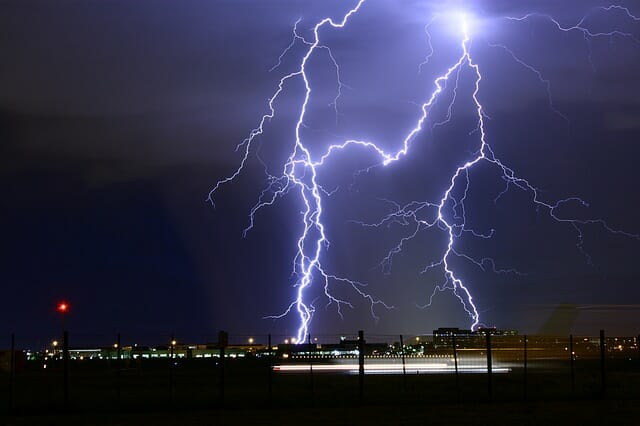
When you lose power, the first thing you usually think of is how to keep your food cold during the outage.
Whether it’s the wind of a severe thunderstorm in the summer, the weight of an ice storm in the winter or even a traffic accident that takes down a power line, you can experience a power outage any time of year.
If you are like most people, one of the first things you think about when your power goes out is the food in your refrigerator and freezer. How long can your food safely last without power?
If possible, preparation and caution are two paths you should follow to protect your food supply. First, let’s look at preparation.
Preparation
Ensure that you have appliance thermometers in your fridge and your freezer. Your refrigerator should maintain a temperature of 40 degrees Fahrenheit or lower. However, your freezer should be 0 degrees or lower.
If the weather forecast calls for severe storms, another way to prepare is by freezing quart-size plastic bags of water to use as makeshift ice packs in the event of a power failure. Fill the bags about three-fourths full of water and fit them around your frozen and refrigerated food to help keep them cold. Another way to prepare for a power outage is by maintaining at least a three-day supply of ready-to-eat-food for your family.
Portable Solar Generator Provides Dependable Backup Power During Any Crisis
Caution
When the power goes out, it is important to conserve the cold air that you do have in your appliances. Open the refrigerator and freezer doors as little as possible.
When kept closed, a refrigerator will keep food appropriately chilled for approximately four hours. A full freezer will keep foods frozen for about 48 hours, and a half-full freezer will do the same for 24 hours. If your freezer is not full, you can help things stay frozen by grouping them together.
If you know that your power will be out for more than 24 hours, you can purchase dry or block ice to extend the cooling time. A 50-pound package of dry ice will help keep the food in a full 18-cubic-foot freezer frozen for about two days.
When your power comes back on, check each food item separately for spoilage. Dispose of any product that feels warm to the touch or that has an unusual smell or appearance. Do not taste food to determine its safety. Instead, follow the credo, “When in doubt, throw it out.”
Check for ice crystals or a temperature of 40 degrees Fahrenheit or below for your frozen foods. Frozen food that has partly thawed or completely thawed may be safely refrozen if it still reveals ice crystals.
Our Newest Solar Generator! Bigger – Stronger – Faster!
Final Thoughts
All foods are considered safe when kept in an unopened refrigerator that has been without power for up to four hours. After that four-hour window, the U.S. Department of Agriculture’s (USDA) Food Safety and Inspection Service recommends that you depose of cooked leftovers, meats, poultry, fish, eggs, milk, soft cheeses, salads and other perishable foods. Always dispose of any food items that may have come into contact with raw meat or its juices.
Most condiments, however, are still safe after four hours without refrigeration. The good-to-go list includes ketchup, mustard, relish, jams, jellies, olives, soy sauce, barbecue sauce, certain hard cheeses as well as whole, un-cut fruits and vegetables.
The USDA maintains a website with specific rules on food safety after a power outage. Here are a few other helpful resources:
https://www.foodsafety.gov/keep/charts/refridg_food.html
https://www.usda.gov/media/blog/2016/09/26/are-you-and-your-food-prepared-power-outage
https://www.fda.gov/food/resourcesforyou/consumers/ucm076881.html
https://www.redcross.org/get-help/how-to-prepare-for-emergencies/types-of-emergencies/food-safety
What are your best tips for keeping food cold when the power’s out? Share your tips in the section below:


























